Social media lurkers have untapped potential for additional engagement, but breaking their current social media behavior isn’t easy.
Many social media lurkers fear that they’ll be judged by their peers if they comment or reshare a post, and others simply don’t want to take the time and effort to engage with content.
In this post, we’ll define a social media lurker and then discuss how you can encourage social media lurkers to engage with your content.
What Is a Social Media Lurker?
A social media lurker is a person that scrolls through social media but doesn't engage (like, comment, share, etc.) with the content.
These people may enjoy your posts and even become customers of your business, but you won't see them liking or commenting on your posts.
In fact, you won't even know that they're reading your content.
While social media lurkers aren't bad, here are a few specific benefits you'll receive if you can transform them into actively engaged fans:
-
Build Relationships With Prospects Faster: When prospects engage with your brand, and you respond to their engagement interactions, it helps you build trust faster as the dynamic transforms into a two-way interaction.
-
Enjoy More Organic Reach: When social media algorithms see posts with high engagement, they assume it's quality content and often give it more reach.
-
Earn Trust and Credibility: If other people see your posts have a lot of engagement, it creates a more credible first impression of your brand.
-
Generate Feedback From Your Audience: If prospects engage with your content, you can learn what resonates with them and improve your messaging and future content.
Below we'll discuss how you can encourage social media lurkers to engage with your content and turn them into raving fans.
How To Encourage Social Media Lurkers To Engage
To transform social media lurkers into actively engaged users, most advice focuses on optimizing your content to improve engagement. For example, including visual assets, using hashtags strategically, and creating a unique point of view on trending topics are all excellent ways to improve general engagement.
The problem with engagement best practice advice is that small optimizations typically aren't compelling enough to convince people who rarely (if ever) engage with social media content to suddenly change their social media behavior and start engaging with your content.
Here are a few more compelling methods to encourage social media lurkers to engage with your content.
Step 1: Incorporate Employee Advocacy
Even if a person rarely engages with social media content, they often comment and support content from their close friends celebrating recent achievements.
For example, even if a person rarely engages on social media, they may like or comment on a friend's announcement about a new job position or life accomplishment.
This is because people don't feel others will judge them for celebrating their group of friends' achievements, and people feel good supporting their friends' accomplishments.
So, use that to your advantage. Instead of just promoting the brand messages on the company's social media pages, ask your employees to be brand advocates and share their career achievements with your company on their social media accounts.
Here's an excellent example of employee advocacy where the employee shares the company's accomplishment and frames it in a way that also makes it her own personal accomplishment, too:

Source: Katherine Lee
By including her own picture and framing the company's progress as her own career accomplishment, her close friends (many of whom may not regularly engage with social media content) engaged with the post to show their support for her accomplishments.
The problem is that many employees are social media lurkers themselves and don't know what to post on their personal social media accounts.
So, even if you ask them to engage with company content or promote recent achievements on their social media accounts, employees may not oblige. Or, you may notice that people act on your initial requests, but engagement eventually declines over time.
To increase employee engagement, make it easier for employees to engage by giving them specific instructions on which posts to engage with and guidance on what to say.
Unfortunately, providing specific instructions for each employee is unrealistic, so we built GaggleAMP, an employee advocacy platform, to make it easy to send personalized engagement instructions at scale.
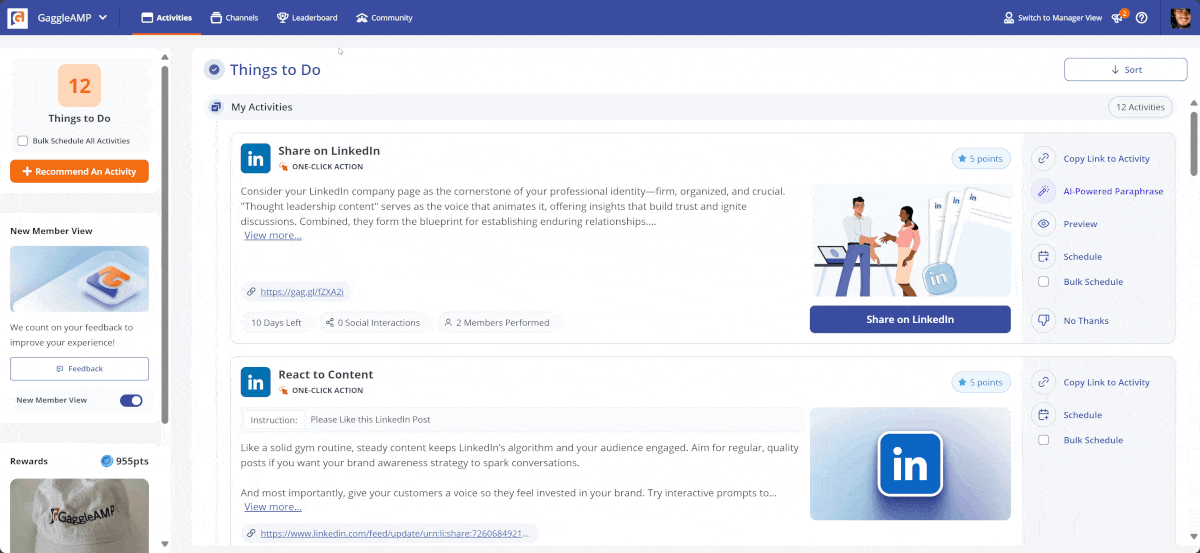
Employees can then complete the engagement activity directly inside the Gaggle and schedule it to publish at a future date. Thanks to scheduling, employees only have to set aside time once per week or month to devote to advocacy. As a result, they're more likely to engage consistently.
GaggleAMP also offers analytics that shows which employees are most active, which employees generate the most reach, and the content that achieves the most total engagement.
There's also an internal leaderboard that ranks employees by engagement effort. This is a great way to encourage friendly competition and further inspire employees to remain actively engaged.
Step 2: Run Contests or Giveaways
Social media lurkers need a compelling reason to break out of their traditional social media patterns.
One great way to incentivize social media users to engage with your content is to offer a free lead magnet in exchange for commenting on your social media post.
For example, this post offers a free lead magnet (the first episode of their show for free) if the users comment on the post:
You can even set up a social media autoresponder to automatically send the lead magnet to commenters.
The key to making contests and giveaways work is ensuring the giveaway or lead magnet is more valuable than anything they can find for free online.
Proven blueprints supported by impressive case studies are excellent lead magnets as there aren't many available online for free.
Here's a great example of a compelling blueprint supported by a case study. It earned 27 comments in just the first hour, which is about 10x more engagement than his typical posts.
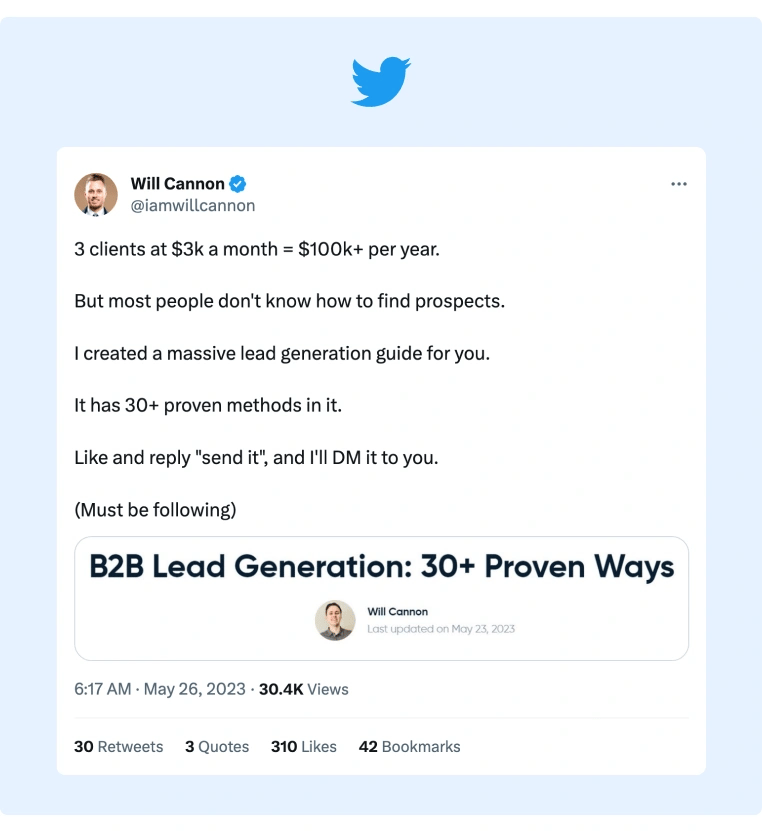
Source: Will Cannon
Step 3: Offer AMAs
Another great way to get people who normally never engage on social media to break out of their shell is to offer them direct access to you.
Here's a great example from Anand Sanwal, the founder of CB Insights.
Even if you normally never engage online, you might engage with this post because it's a one-time opportunity to get your questions answered by a multi-million dollar founder. He also put a time box around it (two hours) to add fear of missing out (FOMO) and encourage people to engage immediately.
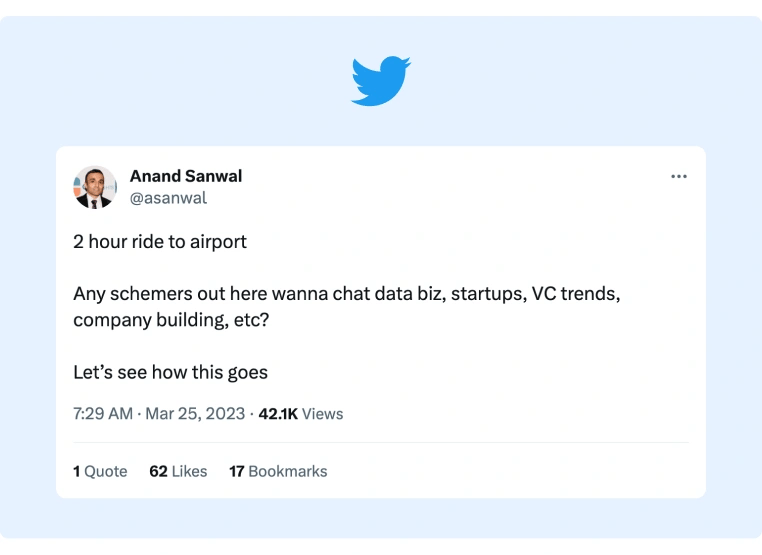
Source: Anand Sanwal
Obviously, Anand has a significant advantage as he has an impressive background and a large social media audience. If you, or the brand account, don’t yet have a large following, partner with an influencer with a large social media presence and ask them to do an AMA with your audience.
You can do the AMA live over video or through written text, the way Anand did his AMA.
Step 4: Actively Engage With Comments and Offer Personalized Help
Many people don't engage on social media because they don't want to feel ignored. Perhaps they've posted comments in the past, and nobody responded to them.
A great way to get social media lurkers to start engaging with your content is to respond to all existing comments. When they see you responding to other people's questions, they're more likely to comment on your content.
For example, if you see the author responding thoughtfully to comments, like this one below, you're more likely to ask them a question directly:
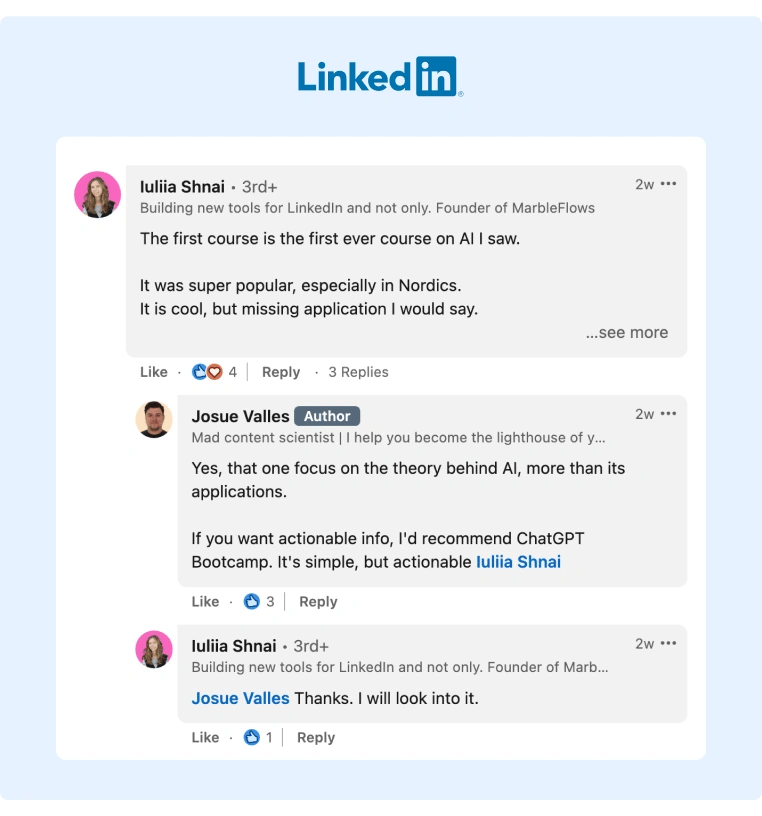
Source: Josue Valles
Another way to actively encourage comments is to change your CTAs to offer personalized assistance.
For example, most people leave a generic CTA like "Any questions? Comment below."
Instead, use a CTA like this one that offers personalized assistance:
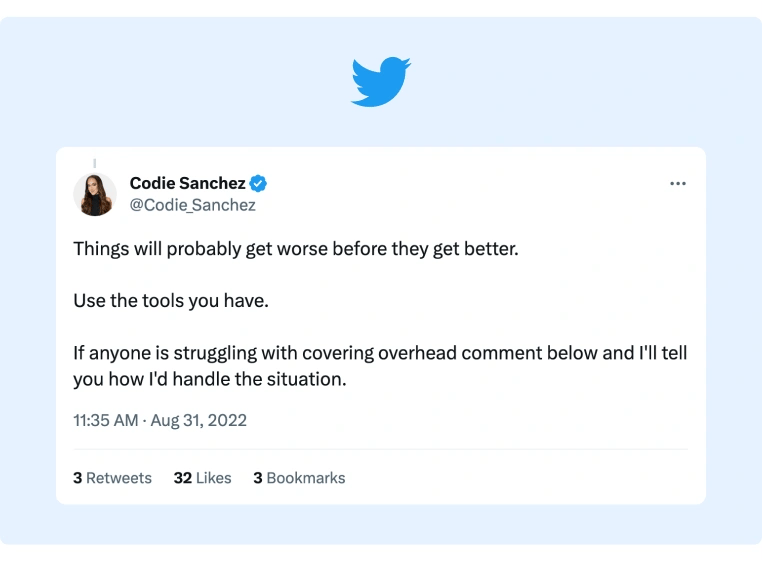 Source: Codie Sanchez
Source: Codie Sanchez
This is the final tweet of a long thread about cash flow models, so she invites people to describe their particular problems and then provides personalized recommendations and advice.
Once again, even a social media lurker might comment on this because it's not often that someone can receive free, personalized assistance from an expert.
This is also a great way to build a stronger relationship with your online community, as you'll learn more about your target audience's pain points to serve them better content in the future. They will feel closer to you if they receive personalized feedback on improving their situation.
Level Up Your Social Media Marketing Strategy by Engaging Social Media Lurkers
It's important to follow all basic social media engagement best practices, like posting consistently, developing engaging content, and posting across social media channels.
However, these best practices typically aren't sufficient to break social media lurkers from their current behavioral patterns, as many brands are already leveraging these best practices.
The good news is that the strategies outlined above provide an additional incentive for social media lurkers to engage with your content, which is often enough to convert them into active users.
While we may be biased, our favorite strategy is employee advocacy. If you'd like to see how employee advocacy can help you earn more engagement by awakening social media lurkers, schedule a call with our team today.



 Source: Codie Sanchez
Source: Codie Sanchez












